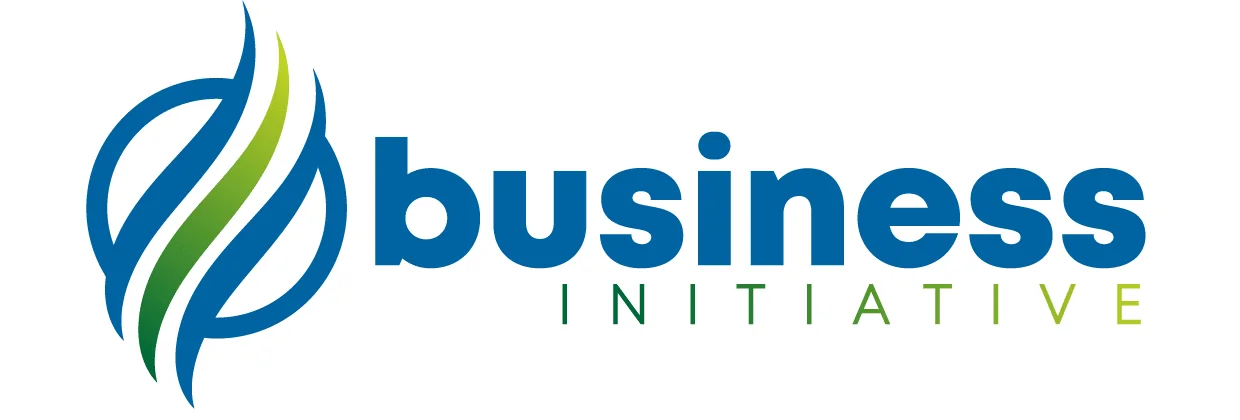Corporate strategy is the overarching plan that guides a company’s growth, resource allocation, and decision-making.
It outlines the long-term goals, objectives, and competitive advantages that a company seeks to achieve.
A well-crafted corporate strategy is essential for both startups and established businesses, as it provides a clear direction and helps align the company’s various activities towards a common vision.
 Key Takeaways
Key Takeaways
- Assess your company: Conduct a SWOT analysis to identify internal strengths, weaknesses, and external opportunities and threats that shape your strategic plan.
- Set strategic goals: Use the SMART framework to set specific, measurable, and relevant objectives that align with your company’s mission.
- Competitive advantage: Identify a unique competitive advantage, like cost leadership or differentiation, to outperform competitors and create lasting value.
- Monitor progress: Track key performance indicators (KPIs) to measure success, refine your approach, and ensure strategic alignment.
- Adapt as needed Regularly review your strategy and adapt to market changes to sustain long-term growth and success.
One famous example of a successful corporate strategy is Apple’s focus on innovation and user experience.
This approach allowed the company to differentiate itself from competitors and create a loyal customer base, leading to its exponential growth and market dominance.
Reading this guide will equip you with the knowledge and skills necessary to assess your current situation, identify opportunities for growth, and develop a comprehensive corporate strategy that aligns with your goals and objectives.
By following the practical tips and insights provided in this guide, you’ll be able to unlock your business’s full potential and achieve long-term success.
 Table of Contents
Table of Contents
Assessing Your Company’s Current Situation

Before developing a corporate strategy, it’s essential to assess your company’s current situation.
This involves analyzing your internal strengths and weaknesses, as well as external opportunities and threats.
A popular tool for this analysis is the SWOT framework.
➤ MORE: Download our SWOT Analysis Template for FREE!
When designing your plan, ask yourself the following questions:
Strengths:
Identify your company’s unique capabilities, resources, and assets.
-
What unique skills, knowledge, or resources does my company possess?
-
What advantages do we have over our competitors?
-
What do our customers value most about our products or services?
Solutions:
Weaknesses:
Determine areas where your company is lacking or underperforming.
-
What areas of our business are underperforming?
-
What skills or resources are we lacking?
-
What negative feedback have we received from customers or employees?
Solutions:
Opportunities:
Identify external factors that could benefit your business.
-
What new markets or customer segments could we target?
-
What emerging trends or technologies could we take advantage of?
-
What partnerships or collaborations could benefit our business?
Solutions:
Threats:
Analyze external factors that could negatively impact your company.
-
What external factors could negatively impact our business?
-
What are our competitors doing that could harm our business?
-
What regulatory or legal changes could affect our industry?
Solutions:
By conducting a thorough SWOT analysis, you can gain valuable insights into your company’s current position and identify areas for improvement.
For an in-depth guide on performing a SWOT analysis, check out our article.
Setting Strategic Objectives and Goals

Once you’ve assessed your company’s situation, it’s time to set strategic objectives and goals.
These should align with your overall vision and mission and serve as specific, measurable targets that guide your company’s actions.
To ensure your objectives are achievable and relevant, consider using the SMART framework:
-
Specific: Clearly define your objectives and avoid ambiguity.
-
Measurable: Establish criteria to track progress and quantify success.
-
Achievable: Set realistic objectives that consider your company’s capabilities and resources.
-
Relevant: Align your objectives with your company’s mission and strategic direction.
-
Time-bound: Set deadlines to create a sense of urgency and motivate progress.
For example, a strategic objective for a startup might be to achieve $1 million in annual revenue within three years, while an established business may aim to increase market share by 10% in the next five years.
Developing a Competitive Advantage

A competitive advantage is a unique aspect of your company that allows it to outperform competitors and attract customers.
Developing a competitive advantage is crucial for your corporate strategy, as it sets your business apart and drives long-term success.
There are several ways to develop a competitive advantage, such as:
-
Cost leadership:
Cost leadership is a strategy where a business offers products or services at a lower cost than its competitors.
This can attract customers who are sensitive to price.
This strategy may not be sustainable in the long term as competitors may lower their prices or new entrants may disrupt the market with even lower prices.
-
Differentiation:
Differentiation is a strategy where a business provides unique features, benefits, or experiences that appeal to a specific target market.
This can create a strong brand identity and customer loyalty, leading to higher profits and market share.
This strategy requires significant investments in research and development, marketing, or customer service, and may not be feasible for all businesses.
-
Niche focus:
Niche focus is a strategy where a business serves a narrow customer segment with specialized needs that are not met by larger competitors.
This can create a loyal customer base and avoid direct competition with larger players.
This strategy requires significant expertise or resources to serve the specialized needs of the target market and may limit the growth potential of the business.
-
Innovation:
Innovation is a strategy where a business continuously develops new products, services, or technologies that are not available elsewhere in the market.
This can create a competitive advantage and stay ahead of changing customer needs and market trends.
This strategy requires significant investments in time, money, or talent, and may not always result in successful products or services.
-
Brand reputation:
Brand reputation is a strategy where a business builds a strong brand identity and reputation that resonates with customers and creates loyalty and trust.
This can differentiate the business from competitors and create a loyal customer base.
Brand reputation may be fragile and vulnerable to negative publicity or customer feedback and may require ongoing investments in marketing and public relations.
-
Customer service:
Customer service is a strategy where a business provides exceptional customer service and support that sets it apart from competitors.
This can create a loyal customer base and generate positive word-of-mouth referrals.
This strategy requires significant investments in training, technology, or staffing, and may not always result in immediate financial returns.
-
Network effects:
Network effects are a strategy that leverages the power of network effects to create a self-reinforcing cycle of growth, where more users or customers attract even more users or customers.
This can create a dominant market position and generate significant profits.
This strategy requires significant investments in technology, marketing, or partnerships, and may be vulnerable to disruption by new entrants or changing market dynamics.
-
Economies of scale:
Economies of scale are a strategy where a business achieves economies of scale by producing goods or services in large volumes, which can lead to lower costs and higher profits.
This can offer lower prices than competitors and generate higher profits.
This strategy requires significant investments in capital, technology, or talent, and may be vulnerable to disruption by new entrants or changing market dynamics.
To identify your competitive advantage, consider your company’s strengths, weaknesses, and market position.
Then, develop a plan to amplify your strengths and capitalize on opportunities while mitigating weaknesses and threats.
Implementing and Monitoring Your Strategy

Once you’ve developed your corporate strategy, it’s essential to implement and monitor it effectively.
This involves breaking your strategic objectives into actionable steps, assigning responsibilities, and establishing a timeline for completion.
Regular progress reviews and data-driven performance assessments are crucial for keeping your company on track and adjusting your strategy as needed.
To effectively monitor your strategy, it’s crucial to track key performance indicators (KPIs).
KPIs are quantifiable measures that help you evaluate progress towards your strategic goals and objectives.
To determine which KPIs to track, start by identifying the metrics that align with your strategic objectives.
For example, if your objective is to increase revenue, you might track KPIs such as sales growth rate, customer acquisition cost, or average order value.
Alternatively, if your goal is to increase market share, you might track metrics such as sales growth, customer acquisition, and market share percentage.
Once you’ve identified your KPIs, establish a system for collecting and analyzing data.
This may involve setting up dashboards or reports that provide real-time updates on performance.
Regularly review your KPIs and adjust your strategy as needed to ensure you’re on track to achieving your goals.
Here are some resources and tools you can use to track KPIs:
These tools offer a range of features, from real-time data tracking to customizable dashboards that allow you to monitor your company’s performance at a glance.
Choose the tool that best fits your business needs and objectives.
Adapting Your Strategy for Long-Term Success

As your company grows and the business landscape evolves, it’s essential to adapt your corporate strategy to ensure long-term success.
This may involve revising your objectives, goals, and competitive advantage in response to changing market conditions or internal developments.
Regular strategy reviews and ongoing market analysis can help you identify opportunities for improvement and stay ahead of the competition.
By developing a flexible and adaptive corporate strategy, you can better navigate the challenges of today’s dynamic business environment and set your company up for lasting success.
Developing a robust and effective corporate strategy is crucial for guiding your company’s growth, making informed decisions, and achieving long-term success.
By following the steps outlined in this article and applying practical tips and tricks, you can craft a winning business plan that drives your company forward and unlocks its full potential.
Don’t wait another day…
Start developing your winning corporate strategy now!
At Business Initiative, we understand the importance of developing a comprehensive and adaptable corporate strategy.
Our team of experienced consultants can help you identify your strengths and weaknesses, analyze market trends, and develop a winning strategy that drives your company forward.
Schedule a consultation and take the first step towards achieving long-term success TODAY!
To get in touch with us, visit our contact page or reach out to us on X (Twitter).
Business Initiative is here to help you achieve your business dreams…
FAQs - Frequently Asked Questions About Corporate Strategy

What is the purpose of a corporate strategy?
The purpose is to set long-term goals and create a unified plan for growth and market positioning.
Learn More...
Corporate strategy aligns all departments to common goals.
It outlines how a company will achieve its objectives by using resources efficiently.
This plan helps create a competitive advantage over time.
How long does it take to develop a corporate strategy?
The time varies based on company size, goals, and industry but usually takes a few weeks to a few months.
Learn More...
Initial research and analysis may require several weeks, especially for larger companies.
Smaller firms can develop their strategy more quickly if they have well-defined goals and existing data.
Ongoing refinement will continue as the business evolves.
Who should be involved in the strategic planning process?
Key stakeholders include executives, department heads, and sometimes external consultants for third-party insight.
Learn More...
Executives provide overall vision and objectives, setting the company's direction.
Managers and department heads ensure alignment and realistic planning for implementation.
External consultants offer unbiased perspectives and specialized market expertise.
How do I know if my corporate strategy is effective?
Effectiveness can be assessed through measurable KPIs aligned with your strategic goals.
Learn More...
Set clear KPIs that reflect your business goals, like revenue growth or market share.
Track performance regularly to ensure progress.
Adjust your strategy if targets are not being met.
How do I identify a competitive advantage for my business?
Assess your company's unique strengths and market position to identify opportunities.
Learn More...
Analyze your strengths and resources through frameworks like SWOT or Porter's Five Forces.
Identify gaps in the market that your business can uniquely fill.
Focus on delivering value that differentiates you from competitors.


